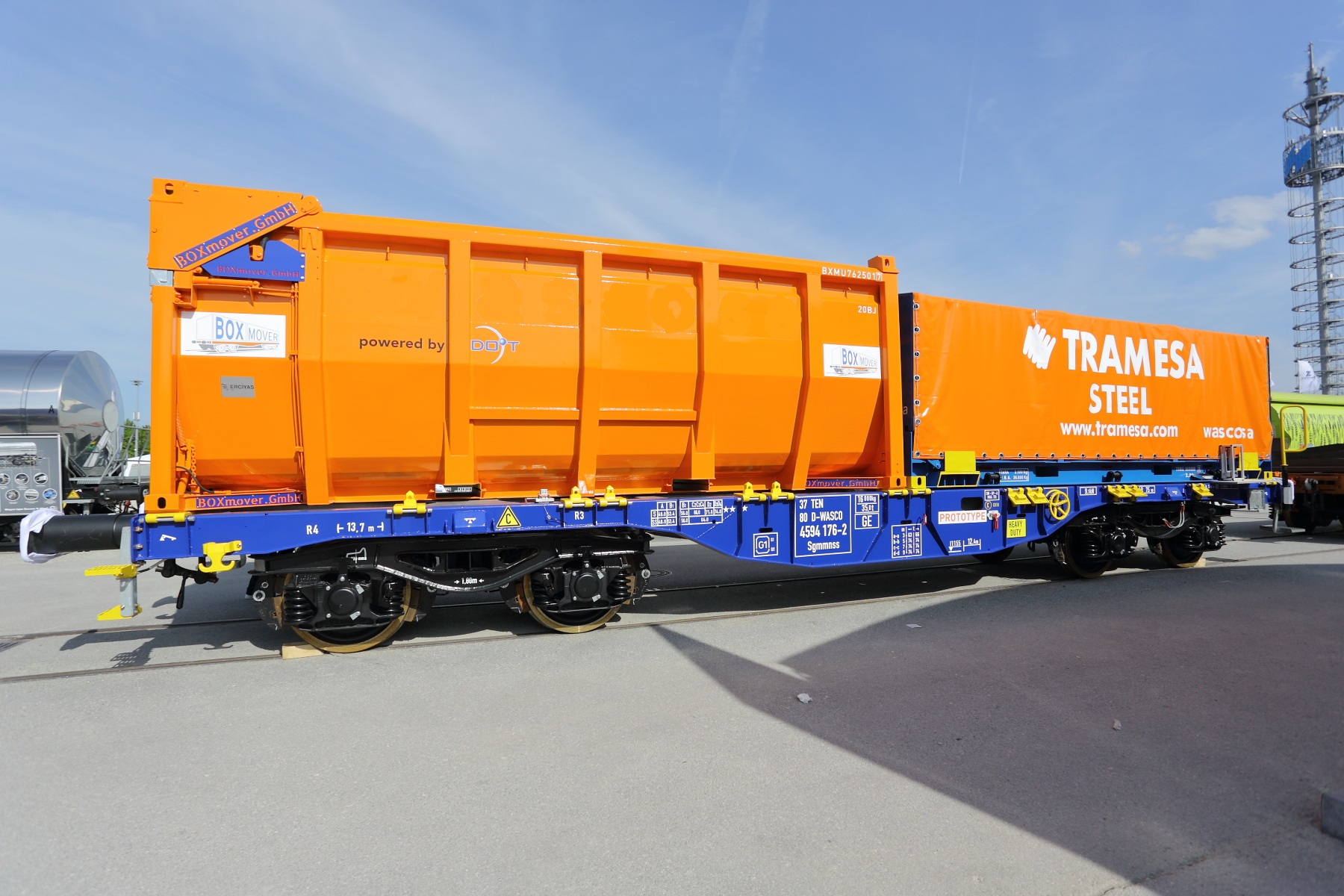RAIL – BaseFrame: modular rail freight wagon
“Giving the wagon the flexibility of a truck”
In order to economically produce steel frames in vehicle construction (especially in freight rail wagon construction), the concept of international cooperation and cross-border trade has long been used. Steel construction production moves from country to country, always looking for the optimal combination of quality and production costs.
In order to give rail freight transport a chance over other logistics solutions, however, innovative thinking is needed and production must be brought back to Central Europe. This can only be achieved by rethinking production-oriented and giving the production process artificial intelligence so that production can take place without the need for employee training. To do this, the product and the production process must have enough artificial intelligence so that the individual production steps can come together independently and without the influence of human errors.
The concept of production-oriented design aims to ensure that everything fits together seamlessly in the manufacturing process without the need for manual intervention.
In the context of the digital twin, all production-relevant data is already processed digitally by the artificial intelligence, creating a virtual 1:1 component in digital form that takes all relevant production-related parameters into account. As soon as the manufacturing process begins with the laser cutting of steel sheet metal, the manufacturing process for the entire product is fixed. All subsequent processes, from edging to plugging together and subsequent welding, are already integrated into the digital twin of the component by the artificial intelligence. The plug-in system with almost zero tolerance ensures an unchangeable shape, thus resulting in a high degree of dimensional accuracy of the components and minimizing welding distortion.
It is of no use to the product if all technical possibilities are implemented and the manufacturing costs get out of control. In vehicle construction in particular, care is taken to ensure that the design follows the bionorm force curves within the structure and that these force lines are derived through individual components that are not fragmented or interrupted. Statistically, a component only fails if the connections/transitions have weak points. It is rare for a component to fail randomly; it usually happens at transitions and connections where individual load cases have not been properly represented. A bionorm structure minimizes this source of error in advance.
Production-oriented design ensures that components only have the machine-related tolerance and that human influences are excluded. The human factor is limited to the professional operation of the machine during the manufacturing process, not the shape and design parameters of the product to be manufactured. Artificial intelligence in the production-oriented design process thus generates efficient and precise production.
The BaseFrame
The BaseFrame is an innovative wagon platform that makes it possible to implement different superstructures on one wagon platform.
The difference to a container solution is that the load transfer takes place in synergy between the body and the BaseFrame, resulting in a lighter and more cost-effective solution.
The TSI ISV approval of the BaseFrame frame makes it possible to reference all superstructures of a wagon length to just one approval procedure.
This means that not only is the production process the same for all wagon types, but only formal additions need to be made to the TSI WAG 2020 approval.
